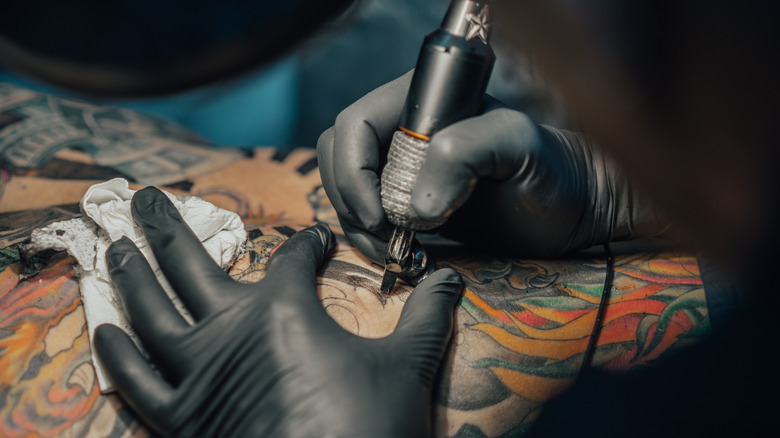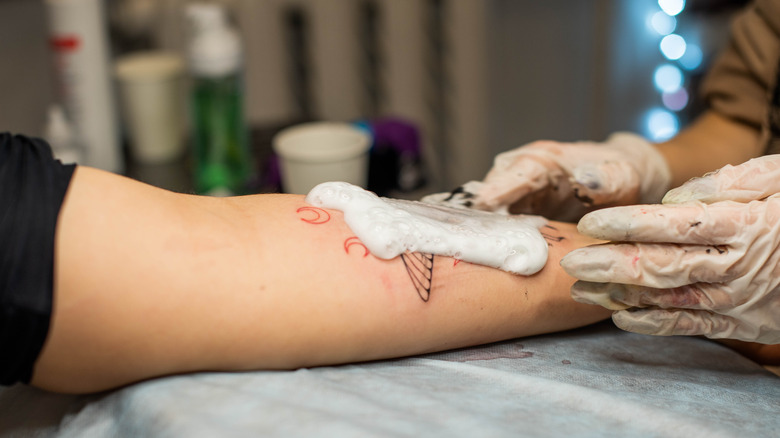What Happens To Your Skin When You Get A Tattoo
Tattoos are a great way to express your creativity and individuality, but what exactly happens to your skin when you get one? Well, in order for your tattoo to be permanent, it has to be more than skin deep (via Men's Health). There are three layers of skin: the epidermis (or outer layer), the dermis, and the hypodermis — the deepest layer of skin.
Tattoo artists use a needle to pierce through the epidermis and inject ink into the dermis, which is composed of an elastic tissue known as collagen. "When ink is being deposited into the dermal layer, a lot of that ink is going to get suspended in that collagen matrix, and some of it will even be taken up by those fibrocytes," says anatomist Jonathan Bennion in a video for the Institute of Human Anatomy (via Men's Health). The needle pricks the skin up to 3,000 times per minute, causing trauma to the skin and injecting ink, which is considered a foreign object. Sensing a foreign invader, the immune system attacks the ink at first, sending white blood cells, or macrophages, to the site of the tattoo and temporarily causing inflammation.
How to care for your tattoo
New tattoos are essentially fresh wounds, so it is absolutely vital that you remember to take care of them properly (via Healthline). One of the most important ways to care for your new tattoo is to wash it and keep it clean. After you get home and remove the dressing or plastic wrap around your tattoo, you can gently wash it with unscented soap and water and pat the area dry. This will help keep out any dirt and bacteria that could potentially interfere with the healing process and give you an infection.
If your tattoo is particularly itchy or dry, your tattoo artist might suggest using an ointment or unscented lotion to moisturize the area. Throughout the first week, your tattoo might start to flake or peel. While this may be annoying or uncomfortable, it is perfectly normal and should quickly resolve on its own. Just make sure you don't peel it or pick it at. This could disrupt the healing process and damage your tattoo.


